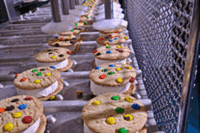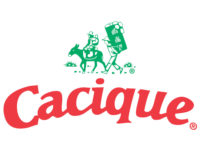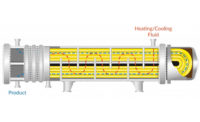Dairy Foods: Some dairy processors also manufacture nondairy juices, drinks and teas. What do they need to know about processing these beverages?
Miles: When making high-acid aseptic juices, the traditional paradigm was that you had to address yeasts, molds and lactics. This no longer holds true due to the increased prevalence of Alicyblobacillus. The increased prevalence of this organism is ostensibly due to the increase in high-acid, shelf-stable products.
The characteristics that make this a troublesome issue are that this bacteria grows in high-acid products and produces spores that are completely unaffected by traditional temperatures used in high-acid aseptic processing and hot-filling. While not pathogenic, it causes spoilage of high-acid products over a period of time that allows the product to get to the store shelves before it is found.
It does not cause much if any change in appearance of the product, nor does it cause the product packages to swell. It does cause is a bad off-flavor often described as “like medicine.” Thus, it can cause considerable consumer complaints because it actually does not have any outward indications of spoilage, but the consumer literally gets a “bad taste in their mouth” from the product. No producer wants this.
Increasing hold times to address this organism is not feasible (hold times may need to be increased to hundreds of seconds). In order to address it with heat only, the process temperatures need to be increased to over 230F. For some producers, this may not be difficult. For others, a change in their processing equipment will be needed. And for others, it is simply not an option at this time.
As such, many producers are looking to “control” the occurrence of the bacteria with in-house cleaning procedures and by pushing better cleaning requirements up the line to their suppliers. However, over time, this may not be sufficient. In the end, since this is a truly ubiquitous organism, and more and more high-acid, shelf-stable products are being produced; the only way to truly be rid of the problem is through proper processing.
Bohn: Nondairy juices, flavored drinks and tea from concentrate have been run for years on standard HT/ST plate pasteurizers by either blending products in a tank, direct injection or in the raw balance tank.
Fresh-brewed tea can be run using a continuous batch process incorporating a unique regeneration section to pre-cool the freshly brewed tea while pre-heating the next batch of water. Proper sizing and control of this special heat recovery section can enable the processor to obtain reduced operating costs and also make them eligible for a one-time commercial energy company rebate program [approximately $45,000, based on a recent installation].
Rick Earley, Beverage and Dairy Market Manager, Admix, Greensboro, N.C.: If they effectively de-agglomerate their higher solids product with an inline disperser or mill as a final step before processing, they may still be able to utilize plate heat exchanger technology (as opposed to tubular/scraped surface) without cleaning/allergen issues.
Bill Snow, Technology Group Manager, SPX Flow Technology Systems:These products are not regulated by the same PMO regulations as dairy products. The times and temperatures for adequate pasteurization vary with product and with the pH. Some are considered high-acid and some can be low-acid. To be safe, the pasteurization process should follow Hazard Analysis Critical Control Point (HAACP) procedures for full process validation.
Juice products may contain pulp. At times, depending on the quantity and type of pulp, fibers may be caught in a plate heat exchanger at points of contact or in areas of low velocity. At times, this may require the heat exchanger to be opened and inspected and sometimes manually cleaned of any fibers before a CIP can be effective. For plants with sufficient volumes of pulpy juice operation, tubular heat exchangers are preferred, as there are fewer “pinch points” where pulp could get caught.
Tea products also can contain tannins which may create a film on the heat exchanger plates and require different CIP procedures for removal than for dairy products.
A risk of the use of one pasteurizer system for running multiple products is of cross contamination — for instance getting orange juice pulp in milk products.






